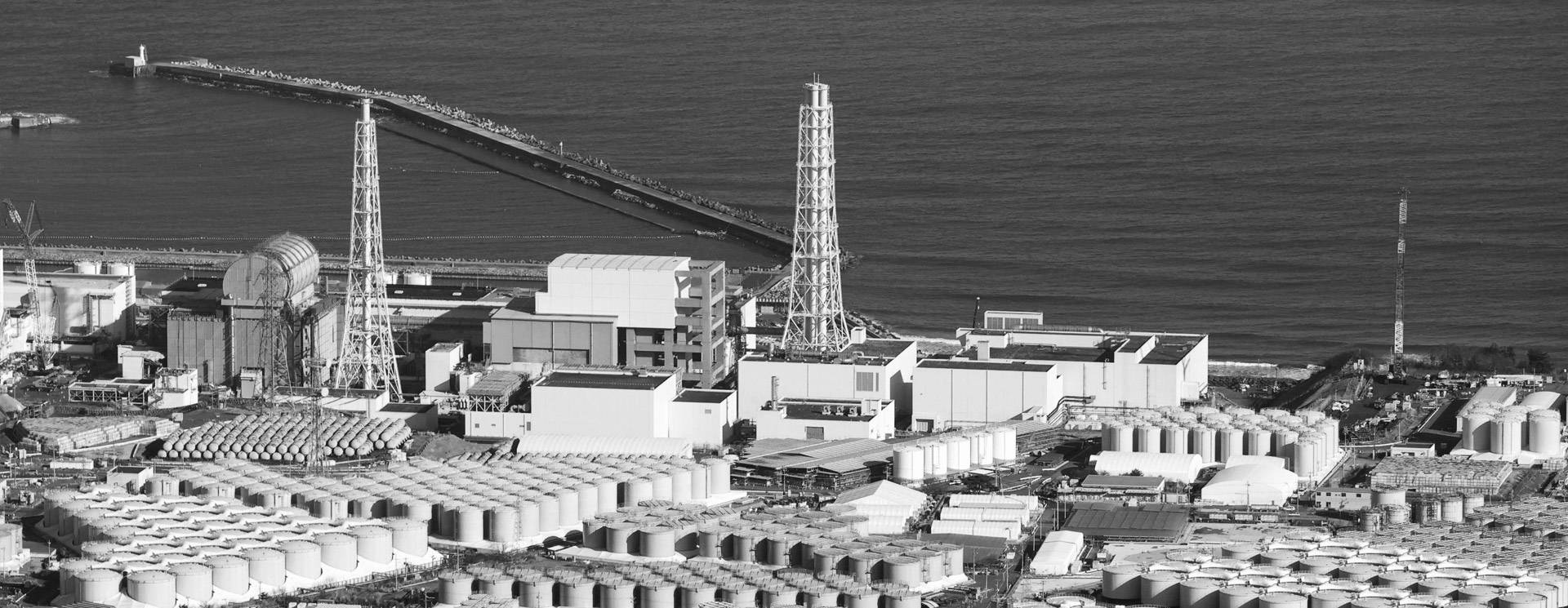
Vedio link: https://mp.weixin.qq.com/s/J1msD0iCF9zm9jePqu5MgA
历史上重大核事故是怎么应对的?
主持人:各位,这里是绿色江南《福岛核污染水专题》访谈面对面,我是主持人雨歌。
2011年3月发生的福岛核电站事故在同年4月被日本原子力安全保安院定为核事故最高分级7级,属特大事故,是历史上第二个被定为7级的核事故。那么在福岛核事故之前,第一个被定为7级的是哪件核事故呢?今天我们面对面访谈绿色江南公众环境关注中心方应君主任。
主持人:请问方主任,历史上首个被定为7级的核事故发生在哪里?对人类和自然环境又产生了多大的影响?
方应君:首例被国际核事件分级表评为第七级事件的特大事故是在1986年4月,前苏联乌克兰境内切尔诺贝利核电站4号机组突然爆炸导致的核事故。此次事故造成大量强放射性物质泄漏核辐射更是影响了周围方圆30公里范围内所有的生物植物,大部分发生了基因突变,据悉,至今仍有被放射线影响而导致的畸形胎儿的出生。
事故发生后,送往医院治疗的203人中有31人死亡,其中28人是死于过量的辐射。卫生单位预测在未来的70年间受到5–12艾贝克辐射而导致癌症的人,比例将会上升2%。2005年9月,联合国国际原子能机构世界卫生组织联合国开发计划署乌克兰和白俄罗斯政府以及其他联合国团体,一起合作完成了一份关于核事故的总体报告。报告指出事件死亡人数共达4000人,世界卫生组织更包括了死于核辐射的47名救灾人员和9名死于甲状腺癌症的儿童。联合国于2006年4月公布世界卫生组织的结果,也许有另外5000多名受害者死于辐射尘地区(包括乌克兰、俄罗斯、和白俄罗斯等地)。所以,总数近1万名受害者。
主持人:切尔诺贝利核电站核事故发生后他们是怎么处理的呢?
方应君:为了控制核电辐射尘的扩散,前苏联政府在事故发生后迅速采取了一系列措施,派人将13万多的居民撤离家园,在现场建立控制区采取了一些措施、清理了放射性物质,建造了一个新的安全的遮盖物,把被破坏的反应堆封存在一个用混凝土和钢壳建造的盖子里,并在其内部安装了通风过滤装置辐射水平检测装置等,用于监测反应堆后续的状况,以彻底解决反应堆的放射性扩散问题。
在辐射水平得到控制外,前苏联政府又限制人员进入受污染区域,并对大面积土地进行了清理。切诺贝利核泄露事故的处理历程十分漫长和艰辛,经过4年的努力,终于在1991年初步完成了事故现场的封存和隔离措施。
但据专家估计,完全消除这场核污染浩劫对自然环境的影响至少需要800年,而持续的核辐射危险将持续10万年。在彻底恢复之前,这里的一切都充满了辐射。
主持人:真没想到一场特大核事故对人类和自然环境的伤害如此之深,影响范围如此之大,而且还会持续800年。那么被定为与切尔诺贝利同级的福岛核事故,后续产生的影响想必也是不容小觑,在未来的30年还有几百万吨的核污染水将被日本政府排入大海,这让全球人类所料不急。关于福岛核污染水的后续进展,我们将持续关注。
歴史上の原発大事故は、人間や自然環境にどのような影響を与えたのか?どのように処理されていたのか?
司会:皆さん、ここは緑色江南「福島原発汚染水特集」対面インタビュー、私は司会の雨歌です。2011年3月に発生した福島原発事故は、同年4月に日本原子力安全・保安院によって重大事故であるレベル7に分類され、レベル7に分類された史上2番目の原発事故となりました。福島事故以前にレベル7に分類された最初の原発事故はどの原発事故だったのでしょうか?本日は、緑色江南公共環境配慮センターの方応君主任にお話を伺います。
司会:方主任にお聞きしたいのですが、レベル7に分類された史上初の原発事故はどこで起きたのでしょうか?また、人間や自然環境への影響はどのようなものだったのでしょうか?
方応君主任:国際原子力事象評価尺度(INES)でレベル7と評価された最初の大事故は、1986年4月、旧ソ連のウクライナにあるチェルノブイリ原子力発電所4号機の突然の爆発による原発事故です。 この事故により大量の高濃度放射性物質が漏れ出し、半径30キロ圏内のすべての生物植物に核放射線が影響を及ぼし、そのほとんどが遺伝子変異を起こしました。 放射線の影響による奇形児の出産がいまだに続いていることが報告されています。
事故後、病院に搬送された203人のうち31人が死亡、28人が放射線の過剰摂取が原因でした。2005年9月、国際原子力機関(IAEA)、世界保健機関(WHO)、国連開発計画(UNDP)、ウクライナ政府、ベラルーシ政府、その他の国連機関が協力して、原発事故に関する包括的な報告書を作成しました。この報告書では、放射線が原因で死亡した災害救援隊員47人、甲状腺がんで死亡した子ども9人を含む、合計4,000人の死者数を指摘しました。2006年4月に国連が発表した世界保健機関(WHO)の調査結果によると、おそらくさらに5,000人の犠牲者が放射性降下物の降下地域(ウクライナ、ロシア、ベラルーシを含む)で死亡したと思われっています。つまり、合計10,000人近いの犠牲者が出たことになります。
司会:チェルノブイリ原発事故の発生後、どのように処理したのでしょうか?
方応君主任:原子力発電による放射性降下物の拡散を抑制するため、旧ソ連政府は事故後速やかに一連の対策を講じ、13万人以上を避難させました。放射性物質を一掃するための管理区域の設置、新たな安全カバーの建設、破壊された原子炉をコンクリートと鋼殻でできた蓋で密閉するなど、さまざまな対策がとられました。また、原子炉からの放射能拡散の問題を完全に解決するために、原子炉のその後の状態を監視するための換気フィルター、放射線レベル検出装置などが原子炉内に設置されました。
旧ソ連政府は、放射線レベルの抑制に加え、汚染地域への人の立ち入りを制限し、広大な土地を更地にしました。 チェルノブイリ原発事故処理への道のりは長く険しいものであったが、4年にわたる努力の末、1991年にようやく事故現場を封鎖・隔離する初期対策が完了しました。
しかし、専門家によれば、この核汚染のホロコーストによる自然環境への影響を完全に除去するには、少なくとも800年かかり、核放射線の継続的な危険は10万年続くと推定されています。完全に修復されるまで、ここにあるものはすべて放射能に満ちています。
司会:このような規模の原発事故が、人類と自然環境に甚大な被害をもたらし、その影響が800年も続くというのは、本当に予想外のことです。そして、チェルノブイリと同レベルとされた福島原発事故、その後の影響を過小評価してはならず、今後30年間で数百万トンの核汚染水が日本政府によって海に放出されることになり、世界の人類は決して焦ってはいけないと予想されます。私たちは、福島の核汚染水に関するその後の進展を見守り続けます。
To what extent have major nuclear accidents in history affected humans and the natural environment?What did they do with it?
Compere: Everyone, this is Lvse Jiangnan "Fukushima nuclear contaminated water topic" interview face-to-face, I am the compere Yu Ge.
The accident at the Fukushima nuclear power plant in March 2011 was classified by the Japan Atomic Energy Safety and Security Agency (JASSA) in April of the same year as a nuclear accident of the highest classification, level 7, which is a very serious accident, and it was the second nuclear accident in history to be classified as a level 7 accident. What was the first nuclear accident to be categorized as Level 7 before the Fukushima accident? Today, we are interviewing Mr. Fang Yingjun, Director of the Lvse Jiangnan Public Environmental Concerned Centre.
Compere: May I ask Mr. Fang where the first nuclear accident in history, which was classified as level 7, occurred? And what was the impact on human beings and the natural environment?
Fang Yingjun: The first major accident, which was rated as a Level 7 event by the International Nuclear Event Scale, was the nuclear accident in April 1986, caused by the sudden explosion of Unit 4 of the Chernobyl nuclear power plant in the former Soviet Union's Ukraine. The accident resulted in the leakage of a large amount of strong radioactive material and nuclear radiation affected all living plants within a radius of 30 kilometers, with most of them undergoing genetic mutations, and it is reported that there are still births of deformed fetuses caused by the effects of radioactivity.
In the aftermath of the accident, 31 of the 203 people hospitalized died, 28 of them from radiation overdoses. In September 2005, the International Atomic Energy Agency (IAEA), the World Health Organization (WHO), the United Nations Development Programme (UNDP), the Governments of Ukraine and Belarus, and other United Nations agencies collaborated on a comprehensive report on the nuclear accident. The report noted a total of 4,000 deaths, and the World Health Organization included 47 disaster relief workers who died from radiation and nine children who died of thyroid cancer. The United Nations released the WHO results in April 2006, and perhaps another 5,000 victims died in areas of radiation fallout (including Ukraine, Russia, and Belarus). So the total is nearly 10,000 victims.
Compere: What did they do after the nuclear accident at the Chernobyl nuclear power plant?
Fang Yingjun: In order to control the spread of radioactive fallout from the nuclear power plant, the former Soviet government took a series of measures quickly after the accident, sending people to evacuate more than 130,000 residents from their homes, establishing a control zone at the site taking a number of measures, cleaning up the radioactive material, constructing a new, safe cover, sealing off the destroyed reactor in a lid constructed of concrete and steel shells, and installing ventilation filtration devices radiation level detection devices, etc., for monitoring the subsequent condition of the reactor in order to completely solve the problem of radioactive proliferation from the reactor.
In addition to bringing radiation levels under control, the former Soviet Government restricted the entry of people into the contaminated area and cleaned up large areas of land. The journey to deal with the Chernobyl nuclear leak was long and arduous, and after four years of efforts, the initial measures to seal and isolate the accident site were finally completed in 1991.
However, experts estimate that it will take at least 800 years to completely eliminate the effects of this nuclear contamination holocaust on the natural environment, and the continuing danger of nuclear radiation will last for 100,000 years. Until it is completely restored, everything here is full of radiation.
Compere: It is really unexpected that a nuclear accident of such magnitude would cause such deep damage to human beings and the natural environment, with such a wide range of impacts, and that it would last for 800 years. Then was designated as the same level as Chernobyl Fukushima nuclear accident, the subsequent impact must also not be underestimated, in the next 30 years there are millions of tons of nuclear contaminated water will be discharged into the sea by the Japanese government, which makes the global human expectations are not urgent. We will continue to pay attention to the subsequent progress of the Fukushima nuclear contaminated water.
Contentsource: PECC WeChat public account
